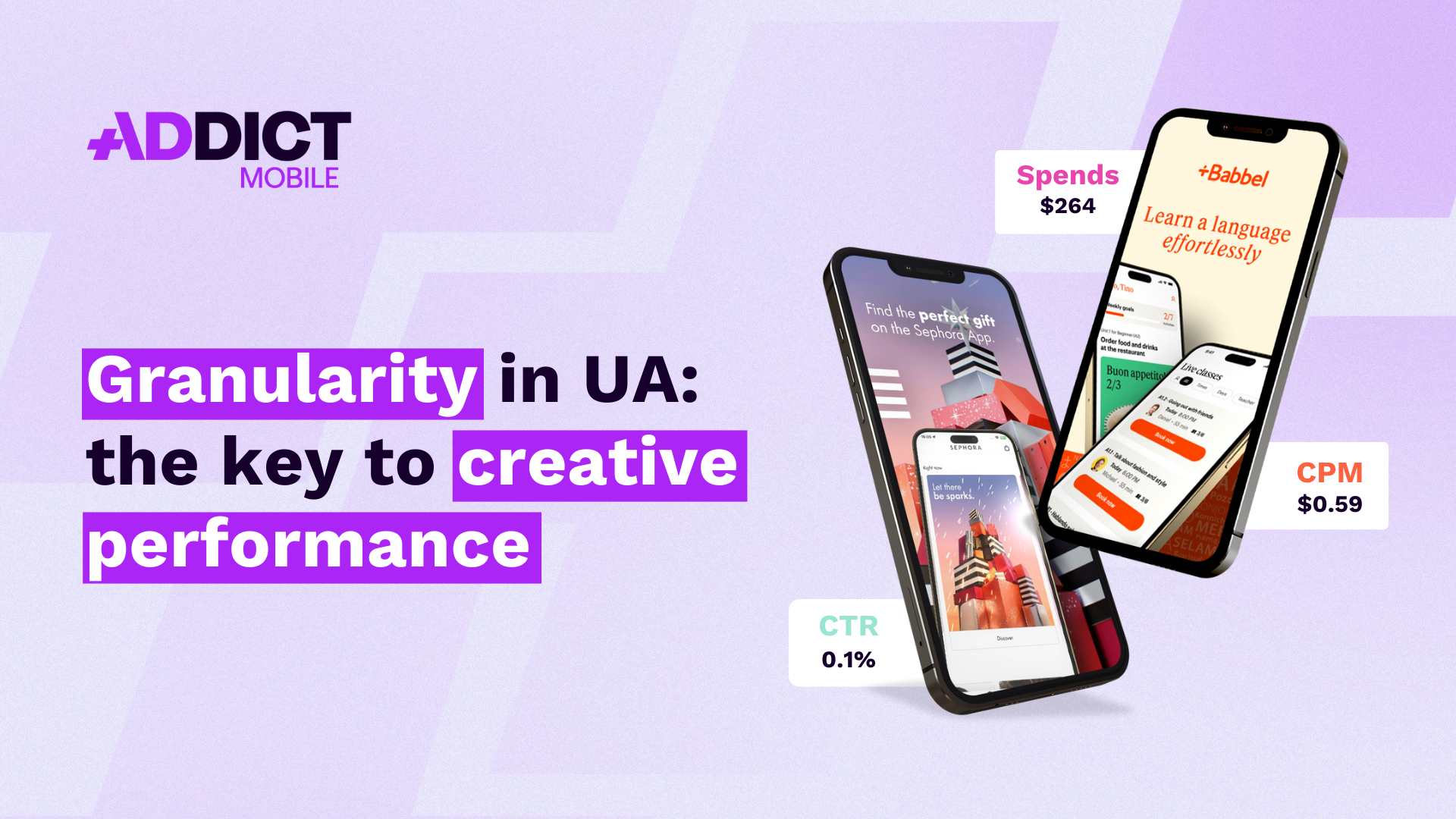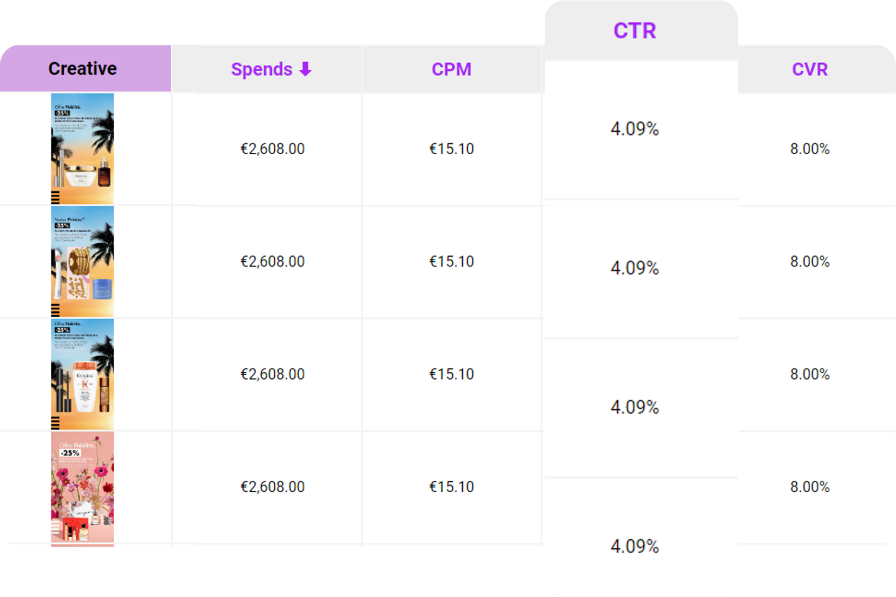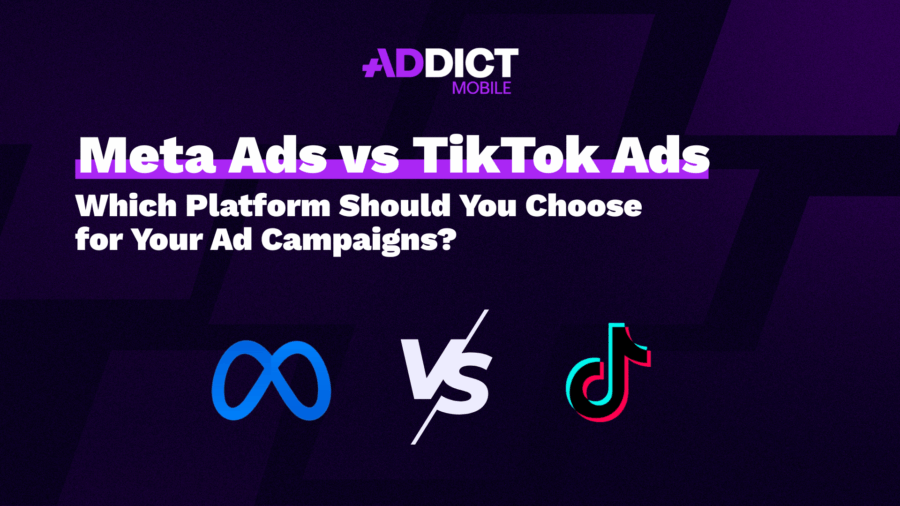Granularity in UA: the key to creative performance

In user acquisition, creatives are a key driver to maximize campaign efficiency. To fully leverage this potential, it’s important to understand what works and iterate quickly. This requires tools capable of analyzing creative performance with multiple levels of granularity by source, country, and visual. This level of precision is essential for fine-tuning and optimizing campaigns.
Key Takeaways
- Creatives at the core of UA: with less targeting available, performance relies on the quality and volume of assets.
- Produce and test continuously: ongoing iteration and A/B testing prevent ad fatigue and surface winning concepts.
- Granularity is essential: analyzing by source, OS, geo, and creative drives effective optimization.
- Fragmented data = limits: multiple sources and iOS restrictions reduce access to reliable insights.
- Centralization is key: tools like Creatives Performance in the Addict Mobile HUB provide clear visibility and faster iteration.
UA 2.0: When the ecosystem reboots creatives
Visuals: The heart of UA strategies
Platforms like TikTok and Snapchat have transformed the way video is consumed on social media (with sound, in full screen, etc.). The diversity of ad formats has also expanded, multiplying creative possibilities. These new behaviors have reinvented how users interact with ads and consequently, how advertisers approach creative production. Today, it’s no longer just about choosing the right targeting or setting the right bid strategy. The performance of UA campaigns now heavily depends on the ability of visuals to grab attention and drive conversions.
Privacy strengthens the importance of creatives
Shifts in the mobile landscape, such as ATT and SKAdNetwork on iOS, along with initiatives like Privacy Sandbox on Android, have limited traditional targeting capabilities. In response to these challenges, creatives play a strategic role in reaching specific audiences based on their interests and behaviors.
Scaling creatives: A must for performance
In today’s landscape, where ad formats are increasingly diverse (videos, statics, motion, UGC) with fewer targeting options due to privacy restrictions, large-scale creative production has become crucial. According to AppsFlyer, ” Scoring just one successful ad may require a whopping 50 ad variants.” (The State of Ad Creatives in App Marketing 2024). The ability to produce visuals in large volumes is therefore crucial to meet the demands of the current market.
At the same time, continuous A/B testing is necessary to maintain campaign performance. When a creative starts to lose its effectiveness, it’s crucial to have already tested multiple variations of the same concept to prevent ad fatigue and keep optimizing campaign results.
Granularity is essential for optimizing creatives
To meet these challenges, having a clear view of visual performance is key to optimizing campaigns. Without a clear understanding of key creative KPIs (CPM, CTR, CVR, IPM, CPA, ROAS), it is difficult to make informed strategic decisions.
This ability to precisely analyze performance also helps refine iterations and A/B tests. By understanding which visuals work, you can test them across different platforms, geos, or audience segments and adjust them to boost effectiveness. This approach ensures continuous improvement in creative performance, driven by accurate and detailed data.
Fragmented data: Why your analysis is stalling
The current mobile market presents several challenges that make accessing this data more challenging.
Fragmentation of sources
Managing large-scale UA campaigns involves working with multiple sources, MMPs, and systems like SKAN, which complicates the analysis of campaigns, ad sets, and creatives’ performance. Constantly switching between platforms to gather and centralize data requires many manual exports, adding to the complexity and effort required in the process.
Inaccurate data, limited decisions
Even when data is collected, its accuracy can sometimes be an issue. For example, obtaining precise metrics for specific conversions, such as cost per event—like a purchase for a retail app—can be challenging. The sources do not always allow for accurate tracking of the desired event, limiting the relevance of the analysis. Additionally, the names of available creatives are not always clearly linked to the corresponding visuals, further complicating the analysis.
iOS restrictions, less visibility
Privacy restrictions on iOS have significantly limited data access, making it difficult to get a full picture of campaign performance. The absence of this data prevents fully informed decision-making, thereby limiting the ability to optimize campaigns effectively.
Centralizing your creative data: The key to optimized campaigns
In an environment where creatives are key to the success of UA campaigns, having a consolidated view of performance is crucial. Access to detailed and up-to-date insights, such as spend, conversion rate (CVR), cost per install (CPI), and in-app events, is essential.
A tool that centralizes this data and allows filtering by source, OS, or geo would greatly simplify the analysis of creative strategies. By bringing together information that is often scattered across different sources, MMPs, and SKAN, it would streamline the management and visualization of performance.

Creatives Performance, a feature of the Addict Mobile Hub, addresses these exact needs. In addition to providing full visibility into creative performance, this tool integrates iOS-specific estimation models alongside SKAN data. This functionality simplifies the understanding of creative strategies for UA campaigns, supports A/B testing, and allows for quick iterations on what works best.
Ready to discover how Creatives Performance can transform your UA campaigns? Feel free to contact us to request a demo.
NEWS
Article in relation

UA Digest #10 : What’s new this month?
Discover our User Acquisition Digest, your monthly update on the latest trends and news in mobile marketing and user acquisition! Meta Andromeda: the...
Published on 28 October 2025
Meta Ads vs TikTok Ads: Which Platform Should…
In 2025, social ads have become a must for capturing attention and driving performance. When it comes to two major players, Tiktok ads...
Published on 20 October 2025
Cheat Sheet #2: Everything you need to know…
Black Friday 2025 is set to be one of the most strategic moments of the year for mobile user acquisition. In 2024, global...
Published on 3 October 2025

